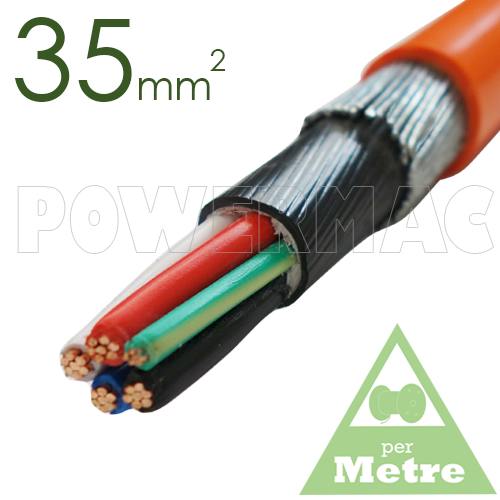What are Armoured Electrical Cables, Their Uses, and Benefits?

An outer protective layer, conductor insulation, and a conductor make up the cable. The presence of an armoured layer within the structure is the primary distinction between electrical cables that are armoured and those that are not. Steel tape armour, thin steel wire armour, and thick steel wire armour are the three categories of metal that make up the cable's armoured layer.
A. What exactly is an armoured electrical cable?
An armoured electrical cable is one that has a metal protective layer around it. The objective of the cable plus armour layer is to improve the anti-interference performance of cables by shielding protection as well as the service life of mechanical protection such as tensile strength and compressive strength. Steel tape, steel wire, aluminium tape, aluminium tube, etc. are examples of commonly used armouring materials. Steel tape and steel wire armouring layers stand out among them for their high magnetic permeability and effective magnetic shielding. These cables are directly installed, as opposed to putting them through pipes, which is more practical and affordable.
Any cable structure can be strengthened mechanically and have its corrosion resistance improved by the addition of an armoured electrical cable. It is a unique cable made for locations vulnerable to corrosion and mechanical harm. It can be laid in any manner, though direct burial in rocky areas is preferable. In order to prevent problems with power transmission through the armour, the bending radius of the armour should be large, and the armour layer can be grounded to protect the cable. The purpose of the power line transmission power cable plus the armouring layer is not only to enhance the service life of mechanical protection, such as tensile strength and compressive strength, but also to have the necessary resistance to external forces interfering with the performance.
B. What purposes does armoured electrical cable serve?
The armoured electrical cable's outer layer has a tough structure that effectively shields the conductor from outside harm. In harsh environments, it is frequently used as a form of burial. It is resistant to corrosion caused by acid rain and animal bites and has high safety performance, stability, and reliability.
Cross-linked cables use cross-linked polythene for the outer insulating layer of the cable conductor, whereas armouring refers to wrapping the outermost protective layer of the cable with steel tape or steel wire to protect it from damage by external mechanical forces. It is possible to use an armoured XLPE cable, which has an armoured outer layer and is insulated with a cross-linked material.
C. What Are Armoured Electrical Cables Used For?
1) Power system: Overhead bare wires, bus bars, power cables, branch cables, magnet wires, electrical equipment wires, and cables for power equipment are among the most common types of armoured electrical cable applications in the power system.
2. Information transmission system: The wires and cables used in the information transmission system primarily consist of local telephone cables, TV cables, electronic cables, radio frequency cables, optical fiber cables, data cables, or other composite cables.
3. Mechanical equipment, instrumentation systems: Except for overhead bare wires, nearly all other products, primarily power cables, electromagnetic wires, data cables, instrumentation cables, etc., are used in this part.
Armoured electrical cables'direct burial technology has been used in many different fields, which represents yet another innovation and advancement in science and technology. This technology must be applied in more locations.
D. The advantages of armoured cables over unarmored cables for electrical transmission
What makes the two types of power cables—armoured and unarmoured—different from one another? Armoured cables have an additional layer of metal reinforcement, which makes them different from unarmored cables. Steel tape armouring and steel wire armouring are two common armouring techniques. There are two types of steel wire armour: thin steel wire armour and thick steel wire armour. The following are some benefits of armoured cable:
- Without the use of electrical conduit, elbows, expensive offsets, or conduit couplings, armoured cables offer the required protection and durability.
- Armour made of metal is resistant to corrosion and suitable for use in wet environments.
- Interlocked armour, unlike conduit or even continuously welded armour, is flexible, ensuring that damage does not affect inner conductors. It is also easier to install in places where conduit would struggle with complex, close-spaced bends.
- Installation requires no specialized cutting or bending tools.
You can always get in touch with Powermac Cables in Australia for the highest quality armoured cables and other kinds of wires and cables. They can serve as a reliable partner for your upcoming electrical installation.
